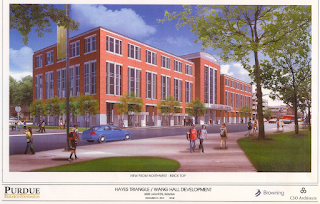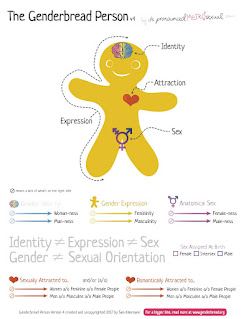Prelude to ADU: 2011
At the January 6th. city council meeting, Zachary Baiel noted that in light of Ordinance #01-2025, which would permit accessory dwelling units (ADU) in West Lafayette, it would be useful to look at planning documents for New Chauncey from 2013. Resolution #07-2013 amended the Tippecanoe County Zoning Plan to incorporate the New Chauncey Neighborhood Plan . Ordinance #19-2013 set up The Historic Preservation Commission, as well established the boundary of the one city (versus national) historic district, New Chauncey.
Both are worth looking at, particularly if you are new to our city government.
But the debate as to whether or not a multi-class, multi-generational near campus neighborhood was tenable began in earnest in 2011. The catalyst was the (re)location of Seng-Liang Wang (“Wong”) Hall to the east side of Northwestern Ave. Originally planned for Discovery Park in Sept. 2008 (five other sites were considered), Wang Hall was moved to Northwestern Ave. across from the MSEE building and beside the Northwestern Ave. parking garage.
In addition to the construction of this electrical and computing engineering building, the original plan called for the demolition of the corner McDonald’s and imagined a row of town homes along Grant St. The project completion date was originally set for the fall of 2010.
The announcement of the relocated and expanded hall, plus its commercial and residential components, surprised and frightened the residents of New Chauncey and Hills & Dales. Its construction was contested.
Over the years Purdue’s near campus neighbors had been told that the university had no intention of ever jumping Northwestern Ave. Informally, at cocktail parties and on the golf course, senior members of the Purdue administration scoffed at the idea. Why would Purdue invade an old residential neighborhood which housed so many members of its faculty and staff? There was so much empty Purdue land to the west.
The Wang Hall project blew past a city request (mine) in 2009 for a land use plan for New Chauncey. Demolition had already begun (Phi Kappa Tau) by January 2011 when we learned the extent of the Purdue Research Foundation’s plans for the Hayes Triangle Project.
Determined neighbors lead PRF to engage a facilitator for a Wang Hall/ New Chauncey Neighborhood conversation. Under the direction of Indianapolis architect Jim Schellinger (Jim ran for governor as a Democrat, and was Secretary of Commerce for Eric Holcomb, a Republican), the process began in May of 2011.
Besides Schellinger and his CSO (the Wang Hall architects) staff, Chandler Poole (City Director of Development), Joe Hornett, (President of the Purdue Research Foundation), Sallie Fahey and Ryan O’Gara (Area Plan Commission), Peter Bunder (WL City Council District #2) and Carl Griffin (New Chauncey Neighborhood Association) were involved in the discussions. It was always stuffy in the Northwestern parking garage’s meeting room.
Collaboration, compromise, and understanding were the stated aims. Both Hornett and Schellinger, with connections to Notre Dame, admired the University District Development Corporation used by Notre Dame and the City of South Bend.
The target was to buy and renovate 50 existing houses. By August of 2011 by-laws for a 501(c)3 awkwardly named “New Chauncey Rebound” had been drafted by PRF. The foundation promised an initial matching grant. New Chauncey was folded into the village TIF (tax increment financing) District. This would enable some additional funding from the city RedevelopmentCommission.
The nascent land use plan had two initial victories. Shane O’Malley was unable to demolish 401 N. Salisbury St. Mark Munzier’s 10 story “Boiler Cribs” bumped up against this discussion, and was cut in half so as not to dwarf Mackey Arena. It became the Fuse, and won approval because of the appeal of a CVS and a Fresh Market.
But soon President France Cordova would be on her way out. So would Joe Hornett. So would Chandler Poole. Everybody would move on as Mitch Daniels moved in. West Lafayette annexed lands to the west in 2013. Purdue would become part of the city. There would a joint project all along State St. beginning in 2014. The New Chauncey project disappeared.
It joined a list of failures. Mayor Sonya Margerum and Katy Bunder approached President Martin Jischke directly looking for support. New Chauncey Housing Inc., after a strong start, collapsed. New Chauncey Rebound never was. The West Lafayette Enrichment Foundation, a creature of the city Redevelopment Commission, has managed only to approve its by-laws in the last 18 months.
But here is the rough compromise worked out along the way as the 13 story and 15 story and 16 story high rises went up in what was once the village. Build whatever you want up and down State St. Purdue cannot or will not manage its enrollment. Urban density is desirable. But along Northwestern Ave. and north of Fowler, there will be rules. New Chauncey gets to keep its density and its identity.
I am happy to see the West Lafayette Historic Preservation Commission defend that same point in its recent letter to our city council on the subject of auxiliary dwellings.


.jpg)




















